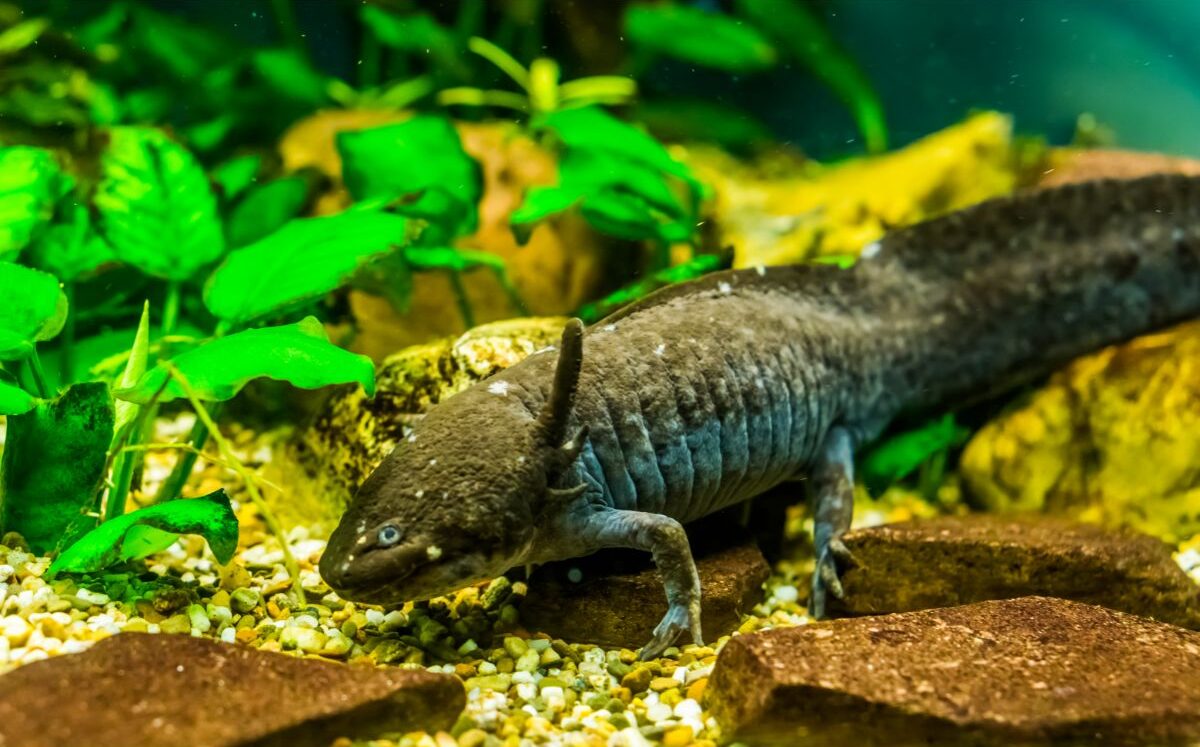Axolotls are among the endangered species, and there are not many left in their native habitat. But why are axolotls so threatened and what is being done to preserve their population?
Where do axolotls live and why are they going extinct?
Axolotls live in the wild in a very limited area, Lake Xochimilco and the neighboring Lake Chalco, in Mexico City.
Nowadays, axolotls are threatened with extinction and their species is on the Red List as their population numbers continue to dwindle. This is mainly due to the destruction of their habitat by the growth of Mexico City.
Lake Chalco has been completely drained and Lake Xochimilco is now mostly canals. The water quality in Lake Xochimilco has declined in recent decades and the axolotl is particularly vulnerable to pollution as it can easily absorb toxins through its skin.
Also, some species have been released that are not native to Lake Xochimilco, including tilapia and carp, both fish that eat the axolotl larvae, causing the population to decline.
Tilapia were released into Lake Xochimilco 20 years ago in an attempt to help the fishery, now they dominate the lake along with carp and compete with axolotl for their food source and eat their eggs.
Axolotls cannot seek out another lake, like other amphibians such as frogs.
The extinction of Axolotl would have far-reaching consequences for the ecosystem in and around the lake. The larger fish and birds that hunt and feed on the axolotl and its larvae would have to find a new food source. The axolotl’s prey, on the other hand, such as snails and worms could reproduce freely, throwing the ecosystem out of balance.
How many axolotls are left in 2020?
It is estimated that about 700 to 1200 animals still live in the wild, but as pets axolotls are a relatively popular animal. Axolotls have been kept as pets and in laboratories since the 19th century.

What is being done to save the wild axolotls?
In 1987, the district of Xochimilco and the lake were declared a World Heritage Site and there are several approaches to save the axolotl.
The best option is to restore the axolotl’s habitat so that the population can recover. This includes improving water quality, restoring Lake Xochimilco as a lake instead of canals, and reducing invasive fish that eat axolotl larvae and eggs. Several axolotl sanctuaries are under construction in Lake Xochimilco that use wooden gates to keep out the invasive fish.
There are also plans to release lab-bred axolotls back into the wild to save the wild axolotls from extinction. However, there are some dangers involved. The released axolotls could reduce genetic variability and spread the chytrid fungus in the wild population. Chytrid fungus is a fungus that infects amphibians, causing the disease “Chytridiomycosis.” Sick animals have skin lesions and are apathetic, often stopping to eat. An outbreak of the chytrid fungus would cause severe damage to the already small wild population, which is why no lab-bred axolotls have been reintroduced so far.
A completely different approach is to keep the population in zoos and aquariums around the world stable and with as high genetic diversity as possible. This would allow a new axolotl population to be established in the wild once their habitat is restored, thus avoiding extinction of the species.
Conclusion
The effort to save the wild axolotl from extinction is a race against time and right now it doesn’t look like the axolotl will win. The population has already dwindled significantly in recent years and it is questionable whether efforts to protect the axolotl will be enough to prevent its extinction in the wild.
Also, considering climate change, which could make Lake Xochimilco too warm for axolotls, the future does not look good for them.
Therefore, axolotls may only be found in domestic aquariums, zoos and research labs in the future.

